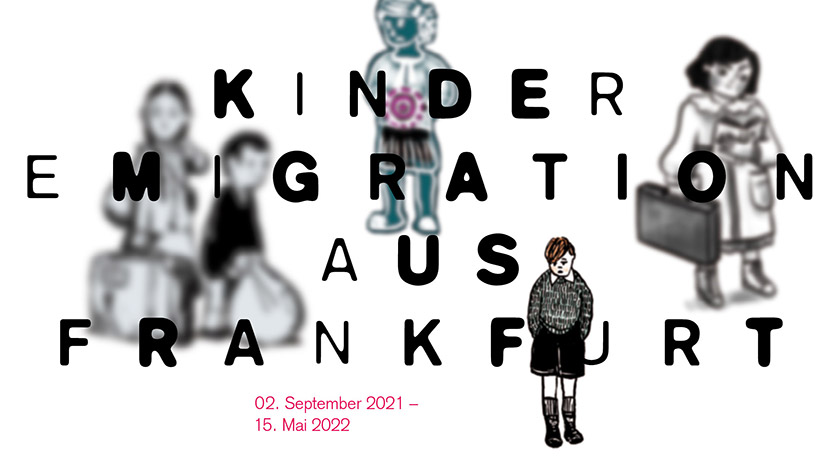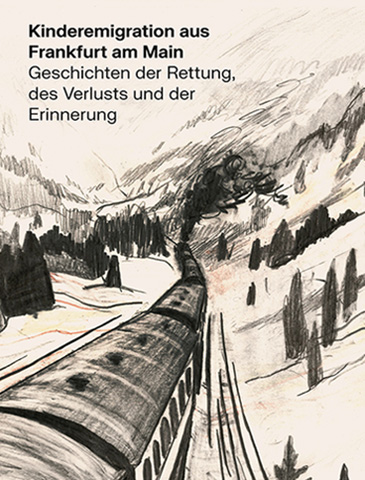Child emigration from Frankfurt
 (*)
(*)
2. September 2021 to 15 May 2022 // temporary exhibition
You’ll only be alone for a little while, everything will be OK – this was the hope with which parents sent their children on the so-called Kindertransporte (children’s transports). Between November 1938 and the beginning of World War II in September 1939, the Kindertransporte enabled around 20,000 children and adolescents to escape the Nazi regime. At least 600 of these children came from Frankfurt am Main. Yet the separation was not just for a little while. Neither did everything return to normal.
The children's escape saved them from persecution but also meant a bewildering separation from their families, trauma and feelings of guilt. On arrival in their host countries, the children were often under immense pressure to adjust; some of them did not live in conditions suitable for children. Back home, they left behind a feeling of emptiness – in their families, in their classes at school, in public life. Most of the children never saw their parents, siblings or relatives again. Their childhood experiences marked them for life and also affected them later on when they started their own families.
The Exhibition
The exhibition "Child emigration from Frankfurt" shows that every story of child emigration is individual and unique. It focuses on six children whose life stories could hardly have been more different: Lili Fürst, Renate Adler, Elisabeth Calvelli-Adorno, Josef Einhorn, Karola Ruth Siegel and Liesel Carlebach.
The exhibits include letters, which often represented the last ever communication from parents, and diaries, frequently the only place where uncensored writing was possible. Written in a language – German – that was later often inaccessible to the children themselves as well as their partners, these written testimonies were treasured over the decades, though their content was seldomly shared with others. All too often, engaging with these objects was simply too painful. The exhibition also shows the children’s last mementos of their parents and childhood.
The biographies of the six “children” are also told through interviews with contemporary witnesses and via an artistic approach: the stories are brought to life in graphic novels illustrated by six different artists. The comics are based around real events but also reveal their own artistic and imaginative engagement with the subject matter.
The question that thus frames the exhibition is how we can remember child emigration today. It also directs attention to local conditions in Frankfurt am Main, the situation in the host countries, the bureaucracy involved and the people who helped the emigration.
For the media stations of the exhibition you can get audio guides at the checkroom in the rotunda of the DNB.
(*Drawings title picture: Illi Anna Heger, Ilknur Kocer, Birgit Weyhe, Sascha Hommer)
Video of the opening of the exhibition
On 1 September 2021, we opened the exhibition "Child emigration from Frankfurt". We have compiled statements and pictures of the evening in a highlight film (circa 5 minutes). You can find a longer version (circa 20 minutes) of the video here.
Catalogue

In collaboration with the city of Frankfurt am Main, the comprehensive exhibition catalogue „Kinderemigration aus Frankfurt am Main. Geschichten der Rettung, des Verlusts und der Erinnerung" (“Child Emigration from Frankfurt am Main. Stories of rescue, loss and remembrance”) has been published to accompany the exhibition. The catalogue is also dedicated to the monument “The Orphan Carousel” created by the artist Yael Bartana, which was inaugurated near Frankfurt Central Station on 2 September 2021.
Kinderemigration aus Frankfurt am Main. Geschichten der Rettung, des Verlusts und der Erinnerung. Hrsg. von Sylvia Asmus und Jessica Beebone. Wallstein Verlag. 2021. – 258 S., 85 farb. Abb., brosch. -ISBN 978-3-8353-3984-2 – 24,90 (D) Euro/25,60 (A) Euro.
Educational service
To accompany the exhibition, the German Exile Archive 1933-1945 offers an accompanying program for upper secondary school pupils (Sekundarstufe I and II).
Last changes:
22.07.2022

